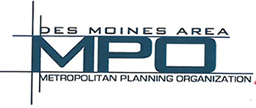When my wife and I first moved to Des Moines, I went to my local credit union to discuss home loan options. The woman I spoke with had a slight accent and an eastern-European sounding name. Being curious about people from different places, I asked her where she was born. She said she grew up in Bosnia and proceeded to tell me how she had been forced to leave her country during the Bosnian War of the early 1990s. When she finished her story, I asked if she ever missed her home. She was silent for a moment then said that the people of Iowa had opened their arms to her during the most traumatic time of her life and because of this she would never leave Iowa. But, what she missed the most from her country was how the streets were alive with people. She said here there are no people on the streets.
Her statement resonated with me because it highlights how the automobile has dominated the design of American streets over the last half-century. For the better part of civilization, we designed streets for people on foot. This design approach created memorable places. It created the kind of streetscapes you see on postcards. We created places for people.
We love places like this. We want to shop there. Or dine there. Or just go on an evening walk. It’s the kind of place we dream of vacationing. If you close your eyes right now I’m sure you can imagine such a place. I’m sure many of you have experienced a street like this first hand. You can find these streets in many of the mid-sized university towns across the country. State Street in Madison, Wisconsin comes to mind. Or Massachusetts Avenue in Lawrence, Kansas. There aren’t enough of these kinds of streets. So many more could be like them.
What makes these streets so special? Great streets are lined with large majestic trees. The sidewalks are wide and bustling with people. Shop windows front the sidewalk. A pub door opens to the tinkle of a bell and sounds of laughter and music spill into the street. Office workers make their way down from second and third floor cubicles to find lunch at a local bistro. A group of ladies, from the senior home down the street, sit on benches and watch the young girls and reminisce about times past. A couple of old men play chess while a musician strums her guitar. A city bus pulls up to a stop and people move on and off. An art student sets up an easel and captures all these things – a moment frozen in time.
There are cars too – but they don’t dominate. They co-exist with the people.
The street described above is complex. It fulfills a variety of social and economic functions. Conventional street design has relegated the street to a single purpose – moving cars rapidly from one location to another – with little or no regard for the elements that make a street a great place.
In conventional street design, trees, buildings, and people are undesirable obstacles. Design standards encourage cars to travel as fast as possible making the street environment very uncomfortable for pedestrians. These streets have no on-street parking or trees to buffer the sidewalks and therefore it is rare to see a pedestrian using the sidewalk. Buildings are built hundreds of feet off the street to accommodate large surface parking lots – therefore people are unable to window shop as they stroll down the sidewalk. Conventional street design creates places that are only suitable for cars and it’s arguable whether these places even meet the needs of the motorist.
We can build great streets again. It will take courage and a willingness to do things differently. We don’t have to recreate the wheel. There are many examples of great streets that work for people as well as automobiles. We can emulate these streets in our community. We just have to be willing to move beyond current practices. We have to be willing to develop better standards. Standards that create the types of places we want in our community.
I look at my daughter and find myself hoping that someday she can experience streets that are alive with people. I hope she can experience this sense of place without a second thought because it’s just normal to her. I hope she doesn’t have to leave home to enjoy the connection to community and culture that comes from simply walking down a great street. I think back to the woman I met at the credit union, and hope that she can also experience great streets that remind her of home. We deserve streets that are designed for people. And we shouldn’t have to experience great streets through a post card. We should be able to walk out our door and find them every day. That is my hope for the future – a city full of streets for people.
 Zach Young is an Associate Transportation Planner at the Des Moines Area Metropolitan Planning Organization (MPO). In his role at the MPO, he works on a variety of bicycle and pedestrian issues, as well as other transit related issues. Zach has a Master’s Degree in City Planning and Regeneration from the University of Glasgow in Scotland, and is an accredited member of the Congress for the New Urbanism.
Zach Young is an Associate Transportation Planner at the Des Moines Area Metropolitan Planning Organization (MPO). In his role at the MPO, he works on a variety of bicycle and pedestrian issues, as well as other transit related issues. Zach has a Master’s Degree in City Planning and Regeneration from the University of Glasgow in Scotland, and is an accredited member of the Congress for the New Urbanism.




I completely agree with what Zach wrote – and I think Des Moines is getting part of it right – in getting rid of many of the one way streets – which encourage drive by traffic and very little interaction. I also think that signage should be more pronounced. On the neighborhood streets that we like – we do see more signage – with design – inviting people into the businesses…. seeing signs like the “gas lamp” sign are a step in the right direction. Also I feel that restoration of the olding buildings makes a huge difference – as these were built for walk by traffic – in scale, placement, and large windows for displays – not little rectangles up at ceiling height – or tinted so dark you can’t see in… I am also excited to see what will happen as Walnut street moves forward… as this was quite the pedestrian street years ago… and can be again if handled the right way… David Barzen